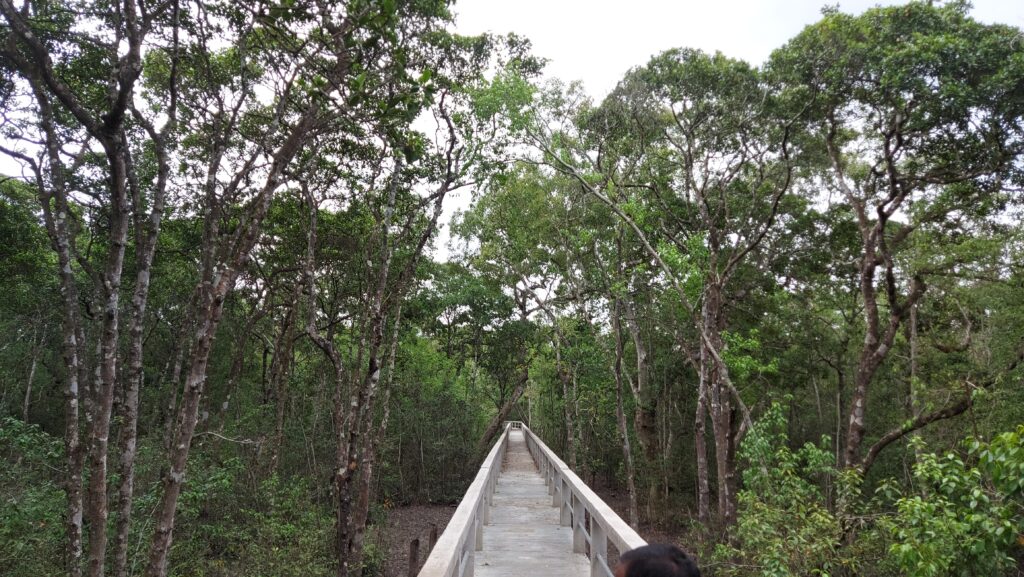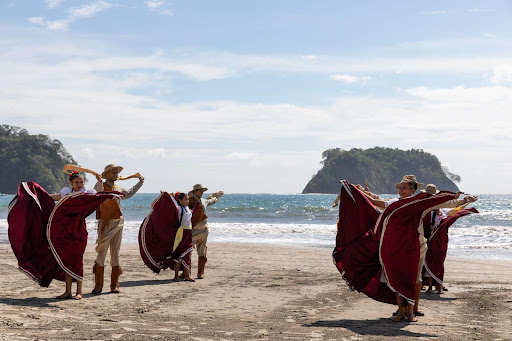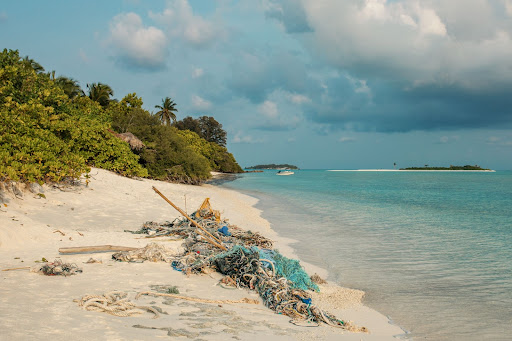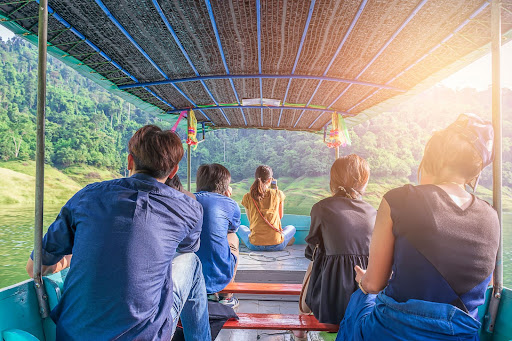A Tale of Resilience and Sustainability: Discover how Quilombo Ivaporunduva’s Community-Based Tourism Initiative flourished despite challenges
Community-Based Tourism Initiatives (CBTIs) as Catalysts for Local Development
In response to mass tourism challenges, sustainable tourism emerged, embodying essential pillars of sustainable development. This paradigm shift reinterprets tourism models, emphasizing consciousness, autonomy, and bottom-up strategies while detaching from predatory practices. Community-Based Tourism (CBT) exemplifies sustainable tourism, promoting local development through social justice, resource redistribution, sustainability, and empowerment. CBT initiatives (CBTIs) drive advanced development in impoverished regions with tourism potential to address challenges posed by mass tourism, visionaries conceived sustainable tourism, embodying sustainable development’s pillars.
Rethinking Mass Tourism: The Resilience of Community-Based Tourism Initiatives
The tourism industry holds a significant global economic position, diversifying and actively participating in a growing services economy. It, directly and indirectly, employs a higher share of women and young people. However, the industry’s labor-intensive nature doesn’t always ensure proportional income generation and prosperity for all. “Tourist spending remains in the hands of a few, with high leakages to major corporations in developed countries”. This is worrisome as capital accumulation logic assumes low-complexity job generation ensures lifelong security. Historically, diverse and richly endowed peripheral regions in Latin America, the Caribbean, sub-Saharan Africa, and Southeast Asia have drawn predatory tourism. Meanwhile, the absence or inefficiency of State regulation has regularly contributed to the vicious cycles of poverty and vulnerability.
Criticising Reductionist Mass Tourism: Impact on Local Cultures and Communities
In this regard, the reductionist notions of mass tourism have been particularly reprehended. To appeal to a larger public, this form of tourism caters to the demands and infinite desires of foreign visitors, at whatever cost necessary. Local cultural heritage is ignored, disrespecting it and disrupting social and economic networks. Additionally, catering to foreigners mistreats locals, displacing them and exploiting environments to depletion. As a result, what drives tourism growth is not the development of the region but the privatization of financial gains and socialization of negative externalities.
Redefining Tourism: A Closer Look at Community-Based Tourism Initiatives
What sets this approach apart is its rooted philosophy of plurality. It is applied all throughout the planning and implementation, as well as in the management and monitoring of tourism activities. This is self-evident in:
- the different backgrounds of stakeholders, ranging from self-sufficient communities to local governments and NGOs;
- its multiplier effect, generating direct and indirect employment opportunities;
- the recognition of the local human capital that seeks protagonists and acts proactively in touristic activities;
- the appreciation of local culture and way of living, as well as, traditional peoples and their historical heritage; and
- the ways of sustainable natural resource management and biodiversity conservation.
Their resilience, however, has been widely disputed by researchers in the tourism and development field. According to an analysis carried out by the International Labor Organization (ILO) in 2006 with 30 different CBTIs in Latin America, eight main deficiencies were identified: (i) dispersed and fragmented supply; (ii) diversification of tourism products is scarce and usually based on natural factors; (iii) professional management is limited due to unfamiliarity with the tourism market; (iv) low product quality; (v) low capacity for negotiation due to limited commercial information and communication mechanisms; (vi) difficulty in promoting CBTs in more dynamic environments; (vii) deficit in infrastructure, sanitation and public services; (viii) marginal or subordinate participation of women in the design and management of initiatives.
In agreement with this analysis, Mielke (2009) focuses on three scopes of deficiencies: (i) market access; (ii) internal governance; and (iii) the management of strategic partnerships. As such, addressing the resilience of CBTIs is the stepping-stone to a successful local development strategy. These qualitative assessments hold high relevance in the post-pandemic scenario. They identify the elements and mechanisms enabling tourism initiatives to survive months without revenue or government or NGO support.
Why are Community-Based Tourism Initiatives on the rise in Brazil?
Quilombo Ivaporunduva’s Path: From Cultural Heritage to Thriving CBTI
In that regard, the tourism experiences of the traditional peoples of Quilombo Ivaporunduva have shown exemplary results by moving beyond idealism and legitimately underpinning the integration of conservation goals into development. Much like other quilombos throughout the country, this community was founded in colonial times to provide refuge to fugitive slaves. These spaces have since then been protected by guarantees and public policies to pay homage to the racial struggle and protect national identity.
The story behind Quilombo Ivaporunduva’s CBTI

Quilombo Ivaporunduva, located in São Paulo, Brazil, houses around 80 families and is esteemed as one of the region’s oldest Remnant Quilombola Community (CRQ). Its rich biodiversity and cultural heritage gained international recognition in 1999 when designated a UNESCO World Heritage site. They formed an association in 1994, gaining legal representation and recognition, and after a 22-year struggle, secured their entitlement in 2010. Their efforts led to recognition by the Land Institute Foundation in 1997, becoming the first CRQ in São Paulo to achieve legal security by INCRA. The community leader on the frontline of this battle was Ditão, who continued serving the community.
Quilombo Ivaporunduva: A Hub of Sustainable Development
Throughout the 1990s, the Association welcomed new prospects of income generation to complement the revenue derived from small-scale sustainable farming, which still is their main economic activity. Around the same time, tourism interest was beginning to pick up in the region. This was noticed by the municipal government who suggested CRQs adopt CBT strategies. Accepting this proposition took some convincing within Quilombo Ivaporunduva, since most locals had never heard about it and had apprehensions about its impacts. As a result, a round of debates was organized to discuss the positive and negative impacts of operating ecotourism and ethno-tourism. Eventually, most were convinced by its potential to contribute to the advancement of conscious citizens, conservationism, and cross-cultural appreciation.
The Association’s Leadership and Organizational Structure: Embracing CBT Strategies and Shaping a Vision
The Association holds authority for discussions and planning. Annually, the community shapes action plans and projects. Monthly meetings track progress and issues. A six-member board implements decisions. It’s elected every two years based on contributions and an audit committee, as stated in their Statute. That includes the relatively low share of income that is withheld by an obligation to maintain the Association.
After all accepted CBT, the Association initiated workshops on tourism concepts, demand mapping, and CRQ values. They used thematic guidelines to define their CBTI’s vision and mission, including aspects like Art, Customs, Nature, and more. After gradually becoming familiar with the idea, they began putting in more collective effort and raising funds for it to thrive. That is when the community decided to build an inn for tourists outside the residential area. The construction took place between 2001 and 2002 with resources from the state government and supervision by ITESP. Furnishing it took another three years with the help of the Secretary of Promotion of Policies for Racial Equality, linked to the Federal Government, and funds from Petrobras.
Building an Inn and Diversifying Initiatives
The Association achieved another milestone by categorizing its main initiatives into tourism, handicrafts, and organic production. They employ locals and families in rotational roles, including gastronomy, maintenance, administrative positions, and the families selling organic bananas. Marketed and delivered by the Association, cash crops like organic bananas took off when they became officially certified by the Associação de Certificação Instituto Biodinâmico. Part of their production is collected by the Quilombola Farmers’ Cooperative of Vale do Ribeira (Cooperquivale), who sell it along with the production of 17 other quilombos. Another part of the production is sold through the National School Feeding Program to cities in the state of São Paulo.
Capacity and Diversity of Visitors
Upon request, it is possible to participate in their harvests, which engage the entire community, followed by feasts and dancing. Besides these rituals, the Association has arranged a tourism package characterized by variety: (i) lectures on the history of the quilombo and current challenges related to sustainability, conservation, dam constructions and local development; (ii) workshops on fishing, handicrafts, medicinal plants, subsistence agriculture, banana crops, gold mining and local gastronomy; (iii) storytelling and village immersion; and (iv) visit Church Nossa Senhora do Rosário dos Homens Pretos. Additional attractions explore surrounding areas like the Caverna do Diabo, Mirante do Governador, Cachoeira do Araçá, Trilha Vale das Ostras and Cachoeira Queda do Meu Deus. The CBTI experience includes becoming acquainted with the local cuisine through a varied menu. Throughout the tour, visitors are requested to respect local privacy.
Two coordinators in charge of the tourism agenda take care of the online bookings; negotiations with tourism agencies; management of the tourism package; hiring and training of local tour guides; elaboration of budgets; purchases for the inn; hiring of support staff and collecting tourism revenue. The price of the stay is defined by the accounting team, and they consider the prices of services and inflation rates. Around 70 people are directly employed to manage and administer the CBTI, not to mention the families contributing to artisanal and agricultural products and other hospitality services.
Achieving Stability and Prioritizing Infrastructure
Given this infrastructure, Quilombo Ivaporunduva has the capacity to receive up to 130 tourists per day and 60 people to stay overnight in the inn. With the help of tourism agencies like Araribá, they have received tourists from all ages, foreigners, schools, and professionals from academia.
These legal and economic milestones towards the maturation of their CBTI granted greater stability that allowed the community to focus on other pressing matters. In acknowledgment of their rights, better facilities in infrastructure and public services became a top priority to protect their subsistence in the territory. Compensation was sought for the construction of a bridge in 2010, which enabled much-needed access to schools and health centers, not to mention an increased production flow and the influx of tourists.
The Pillars of Resilience: How Quilombo Ivaporunduva’s CBTI Thrived

Over the past two decades, at least six neighboring quilombos attempted ecotourism and ethno-tourism through CBT. However, only Quilombo Ivaporunduva’s initiative displayed resilience. They possessed predisposed advantages in geographic location, ecosystems, an established foundation from informal institutions and social organization, political networking inclination, and focused inclusive and strategic visioning. Unlike other Brazilian CBTIs, Quilombo Ivaporunduva embraced comprehensive participation pre-tourism, fostering a symbiotic relationship. Their tourism operation channeled pre-existing strengths productively, aiming to mature by adopting new technologies, constructing robust infrastructure and public services, sourcing multiple finances, ensuring educational opportunities, and deploying versatile attractions. Engaging hospitality demanded an open posture, especially from local guides, convincing them of their role in citizen development, environmental conservation, and cross-cultural appreciation. This transition reflects cultural dynamism stages spurred by the urgency to diversify income sources.
Navigating the Pandemic: Quilombo Ivaporunduva’s Response to Crisis
During the pandemic peak, stringent restrictions impacted core and ancillary economic activities due to mandatory self-quarantine measures. The Cooperquivale partnership halted, leading to surplus production. Face-to-face class interruptions canceled 38 tons of vegetable deliveries. A swift emergency plan established a food distribution network to address this, connecting sponsors and hunger relief campaigns with CRQ food donations. Partners procured food from the cooperative and distributed it in baskets, achieving a triple purpose: sustaining field production, securing CRQ income, and ensuring food security for vulnerable urban populations. Quilombo Ivaporunduva contributed 254 tons of food (from May 2020 to October 2021) to over 31,000 individuals in various quilombos, rural, and urban communities. This initiative persisted until January 2022.
Unveiling the Secrets of Success: Quilombo Ivaporunduva’s Takeaways for Thriving CBTIs
As such, with the maturation of other CBTIs in mind, Quilombo Ivaporunduva’s experience provides some rich reflections and takeaways: (i) branching out to appeal to a wider public; (ii) the differential attraction that forges an authentic experience to secure a competitive advantage over conventional tourism products; and (iii) the importance of governmental assistance in creating incentives for visitation and structural investments.
The Role of Destination Management Organizations in CBTIs

Empowering the Future: How Destination Management Organizations Support CBTIs
Reliance on these opportune determinants alone doesn’t ensure resilience. Enhancements are necessary in dimensions like digital adaptability, predicting increased rural technological infrastructure demand. Long-standing concerns about local development center around information and communication technology needs. The pace of technological transition in rural economies lags behind urban settings, necessitating smart city investment and complex policies. Insufficient facilities in infrastructure, public services, and civil services challenge CRQs. Improved living standards leading to returns suggest that emigration is restricted by fundamental factors rather than voluntary choices. Facility scarcity hampers resilience, hindering responsiveness and community empowerment. Concerns arise about a state draft law recognizing and regulating CBTIs, lacking incentives to bolster resilience. It grants unilateral authority to the State and Municipal Secretary of Tourism for monitoring and data collection without anticipating participative committees or councils linking local needs to private sectors, governmental agencies, and different levels of government’s political will and power.
On a further note, it sustains the gap between stakeholders in the public and private sectors and from civil society and the communities to focus efforts, generate some level of agreement on development objectives, and deliver cooperative mobilization. In fact, other dimensions could benefit from a more effective and efficient public sector involvement – as noted by the absence of the local government and Secretary of Tourism of São Paulo in strategic visioning processes. To understand these shortcomings more deeply, one would need to conduct a personnel analysis of the Secretary of Tourism of São Paulo. This trend is evident in the State’s lack of proactive measures to provide dedicated funds for CBTIs and ongoing educational opportunities, including training for tour guides and hospitality workshops.
Destination Management Organizations’ Strategies for CBTIs
On that note, considering how Destination Management Organizations (DMOs) play an essential role in managing tourism at the local level to attract tourists and support businesses within its boundaries, these are the ways new opportunities could be created:
- Conduct Market Research
- Branding campaigns related to ecotourism, agro-tourism, and cultural tourism;
- High-quality product development for schools and social movements;
- Maximizing and pooling financial resources from both public and private sources;
- Marketing through targeted campaigns;
- Partnerships on issues related to sustainability to achieve common goals;
- Addressing barriers that prevent neighboring CBTIs from maturating;
- Effective communication with stakeholders;
- Supporting efforts to update the regional Tourism Master Plans (PDT);
- Promote cultural appreciation and transparent synergies.
It is important to highlight that DMOs can be part of a government entity, a stand-alone organization, or a combination of a chamber of commerce and a tourism bureau. Businesses can invest in DMOs to pool resources by making voluntary marketing contributions that bank advertising. In essence, it leverages its money with the organization and the community to promote the destination. In parallel, ratifying tourism marketing authorities (TMAs) from government-level authorization allows DMOs not to be at the whim of the government since tourism budgets may have to compete with other priorities.
Empowering DMO Development: Insights from Solimar International
Jennifer Wesselhoff, the President and CEO of the Sedona Chamber of Commerce and Tourism Bureau, strongly advocates for creating these key players in the DMO Development Program provided by the Institute for Sustainable Destinations. With over 20 years of industry experience, she has observed how it shifted the power dynamics between tourism businesses and the city to align their interests. This facilitated an easy decision to increase taxation on the tourism industry, establishing a higher percentage of “bed taxes” in the United States. This move led to increased municipal funds, benefiting both locals and tourists. However, it’s important to note that focusing on higher tourist spending instead of numbers could potentially exclude budget-conscious travelers. Adapting insights from DMO experiences in the US and other Solimar projects to Brazil’s market could usher in a transformative era for CBTIs.
Interested in how we can help you with Destination Management Organizations? Contact us to learn more.









